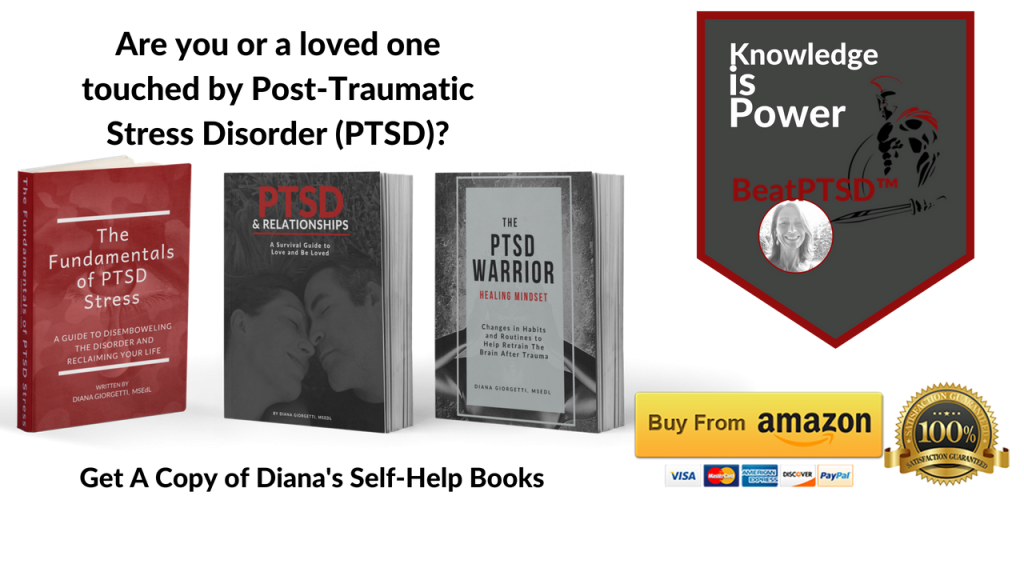I recently shared an abridged version of my life with an old friend. After a brief hug and some tears, she mentioned how amazed she was at how I have managed to remain a functional human after ‘all the crap’ I have endured.
Functional?! That’s funny.
I have never considered myself to be functional. Well, at least not like most people are accustomed to.
For me, being functional has always been all about what needs to be done, and not what I was doing to get it accomplished. For me, being functional was often more a necessity than a virtue.
I have never felt fully functional, but I have always functioned, if that even makes sense.
Anyone who has knowledge of PTSD, Post-Traumatic Stress Disorder, will tell you that functional is a relative term for those who are affected by the disorder.
But my friend’s remarks got me thinking…
How have I managed, after repeated negative experiences, to have the energy and desire to be standing tall and pushing forward in life? The answer is simple yet complicated.
In a sense, I have more ‘mental bounciness’ than other people who have endured the same or similar. My life experiences – especially those that happened as a child – have forced me to adapt to threatening environments and bounce back from them when others freeze, go into shock, or otherwise cease to function. This is called resilience.
Imagine two people sitting at a restaurant. Now imagine that both have, at some point in their lives, been diagnosed with PTSD.
While they’re eating their meal, a car comes fast around the corner, screeching the tires and suddenly crashes into a parked van nearby. A big ‘kaboom’ is heard.
The first person turns, notices the incident, and goes right back to eat. This person does not perceive the sound of the crash or the incident as a threat.
The other person jolts and stops eating as soon as they hear the sound. Their heartbeat accelerates, their pupils dilate, and they start shaking. Their hands are sweating. This person perceives the sound as a threat and believes to be in imminent danger.
This person eventually leaves the restaurant, but the incident rattles them, throwing their entire day down the drain.
I’ve been there many times. A loud sound, a near car accident, or so many other circumstances that can set you off. Thankfully, I have learned to adapt to situations and bounce back from difficult experiences despite their impact thanks to my high resilience.
These two people perceive and manage their surrounding environment in a fundamentally different manner, especially considering that reactions are often based on life experiences.
I’ve always been amazed at how some people can simply shrug off chaos while others can have one small occurrence or change in routine throw them completely out of balance.
So, What is Resilience?
Resilience is a person’s capacity to recover from, adapt to, and bounce back from challenging experiences and situations. Conversely, when a person lacks resilience, the impact of a traumatic event can leave them unable to properly deal with and manage stressful situations.
Resilience is complex because of the different biological, cultural, and social factors that come into play to shape a person. Not everyone can be resilient, and those who are, cannot be resilient under all circumstances.
Resilience is an odd phenomenon, and even stranger for PTSD sufferers because PTSD fundamentally changes your brain chemistry.
But even among people with PTSD there are those who are more resilient than others. Like me.
As a person who has experienced situations most haven’t, I have an uncanny ability to detect threats in my surrounding environment. I am also good at learning new things and tend to have better memories when paying attention to people, objects, or situations in my environment.
While the various negative life experiences left me feeling on edge and hypervigilant all the time, my high resilience allowed me to turn those negatives into skills.
For example, if I go to a restaurant with my family, I almost always know how many tables are occupied around us. I remember what people around me are wearing, and who has the bulky clothes and could be packing a weapon. I usually know where all exits are.
So how did my exposure to challenges at an early age contribute to my enhanced ability to detect threats?
Interestingly, rough childhoods can often build resilience from an early age in ways that are helpful later in life.
Contrary to the belief that all early trauma damages proper functioning, an increasing body of evidence shows that exposure to early trauma does not necessarily mutilate the brain. In fact, early challenging situations may enhance some people’s ability to manage future threats.
Recent studies show that early abuse can enhance a person’s adaptation skills. Sounds awful, right? Well, the more I understand resilience, the more its underlying workings astonish me.
Children who are the victims of abuse or neglect often learn to adapt to bad home environments by becoming hyper-vigilant or emotionally withdrawn.
When a child is subjected to abuse – especially long-term and persistent abuse – they learn to pay attention to their environment in ways that most people never have to, and they can compartmentalize emotions that allow them to think clearly in situations that would put most other people in shock and unable to think or react.
When a person lacks resilience, the impact of a traumatic event can intensify, leaving them unable to properly deal with and manage stressful situations. For children, trauma can make them feel as if their surrounding environment has failed them.
Despite bad experiences, and possibly because of them, resilience is the reason that a difficult upbringing does not always impair a child’s functioning.
Human beings have incredible adaptation skills. This is what helps a child who grows up in a difficult, unsupportive, or abusive environment to bounce back and have a brain wired to cope with bad situations.
Each person undergoes individual evolutionary changes. People who endure hardship and experience traumatic situations – especially at an early age – develop different than others. Their functional brain changes occur in response to stress.
From an evolutionary standpoint, I think that survivors of trauma develop high resilience skills that all humans need.
While trauma, especially child abuse, should never be viewed as a positive – the negatives are indeed horrible – there can be silver linings. And for those who have endured these traumas, learning to maximize and focus on the good can be a key to living a functional and fulfilled life.

